
Shrubs Around Las Vegas, Vegetation Around Las Vegas
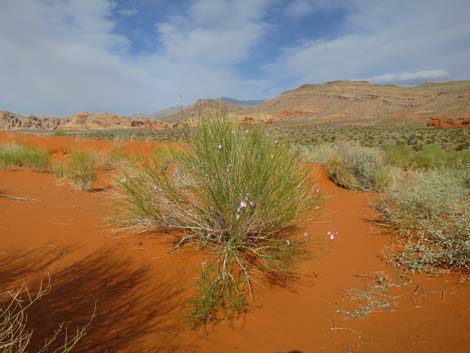 |
General: Gilia Beardtongue (Penstemon ambiguus var. laevissimus) is a subshrub or perennial forb with a woody base and upright stems to about 3-feet tall and 3-feet wide. The leaves are thread-like, bright green, and most fall off during winter. During summer, the top of the plant is covered with pinkish-white, flat-faced flowers. The flower are bilaterally symmetrical with 5 lobes (2 upper lobes, 3 lower lobes), and the upper lobes are folded back onto the flower tube. Gilia Beardtongue is a fairly common to dominant component of desert vegetation communities on dry, well-drained sandy sites in the Upper Sonoran (Mojave Desert Scrub) life zone and on desert flats and in canyon-and-mesa country. Around Las Vegas, look for this species at Valley of Fire, around Zion National Park, and places eastward where it can be quite common. |
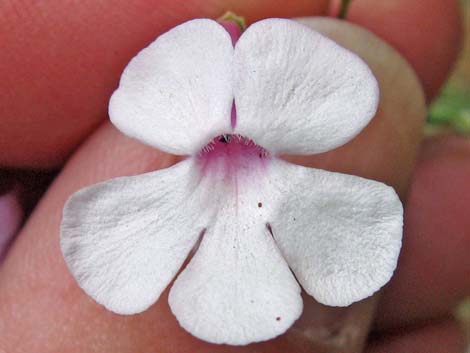 |
Family: Figwort (Scrophulariaceae). Recent genetic research suggests that Penstemon should be included in the Plantaginaceae. Other Names: bush penstemon, Leiostemon ambiguus Plant Form: Shrubby perennial with upright, branching stems and lacy leaves. Height: To about 3 feet. Stems: Highly branched, smooth (rough in P. a. var. ambiguus), woody to well above the base. Leaves: Opposite, simple, and linear; to about 1-1/4-inches long, leaf edges generally smooth (rough in P. a. var. ambiguus). |
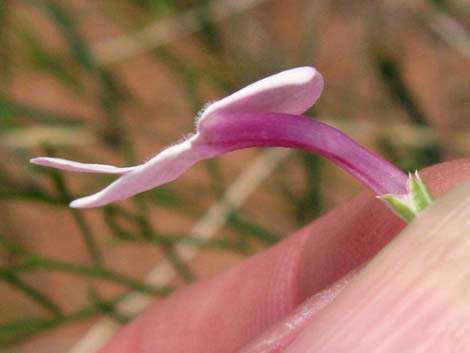 |
Flowers: Blooms late spring and early summer. Numerous narrow inflorescences with many flowers each; 1-2 flowers per peduncle. Flower bilaterally symmetrical; 5 lobes (upper lip with 2-lobes, lower lip with 3); upper lobe reflexed (folded back) at an oblique angle to the flower tube; petals white with pink and purple. Flower tube bearded with short hairs. Seeds: Habitat: Sandy, unstable, well-drained soils in plains country, canyon and mesa country, and other hilly areas. Elevation: About 4,500 to 6,000 feet. Distribution: The species occurs from Nevada (Clark County) to Colorado, Nebraska, and Texas, south into Mexico. The subspecies P. a. laevissimus occurs in southern and western portions of the range. Comments: |
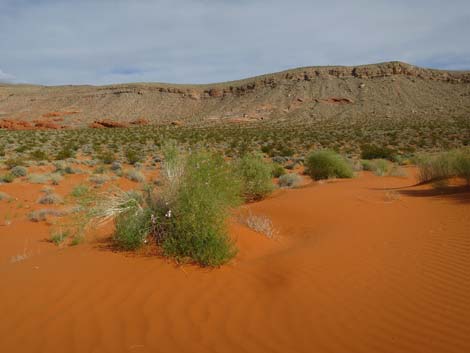 |
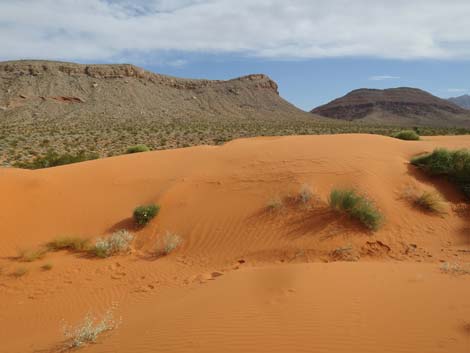 |
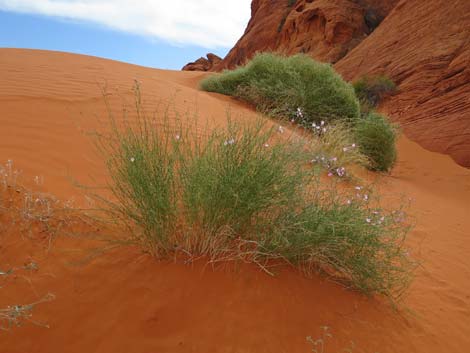 |
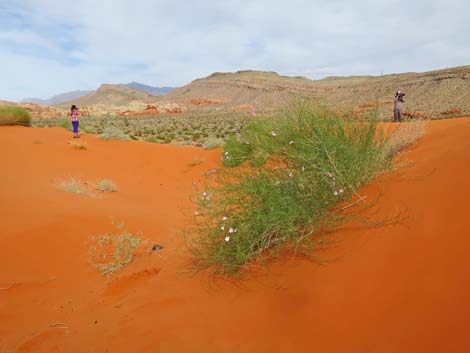 |
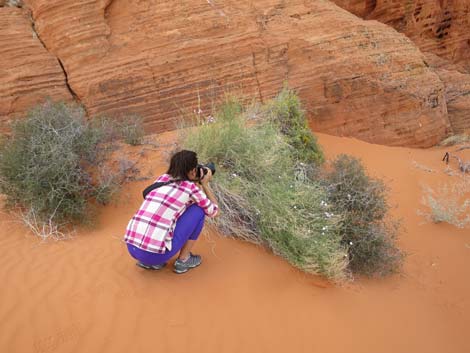 |
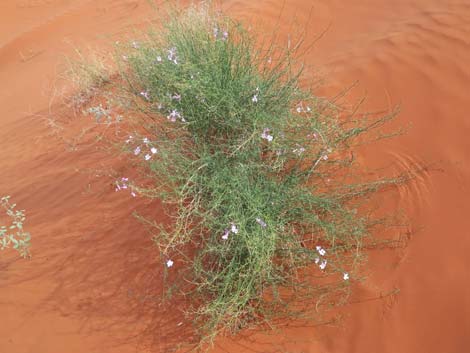 |
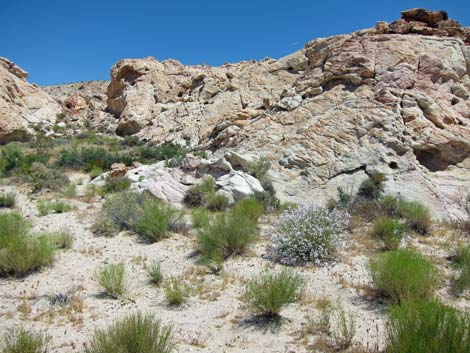 |
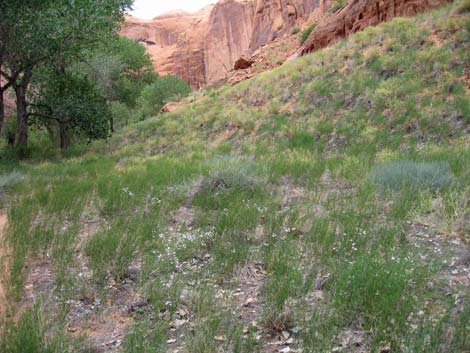 |
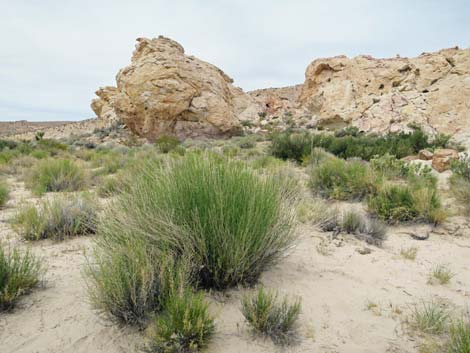 |
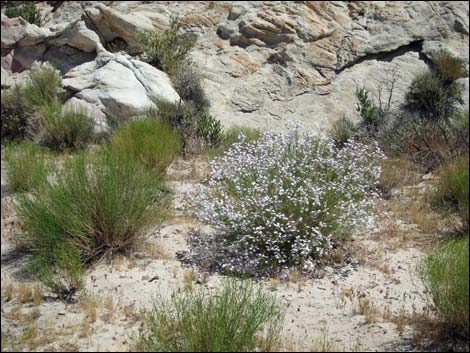 |
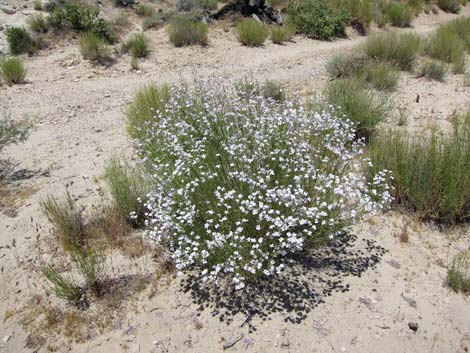 |
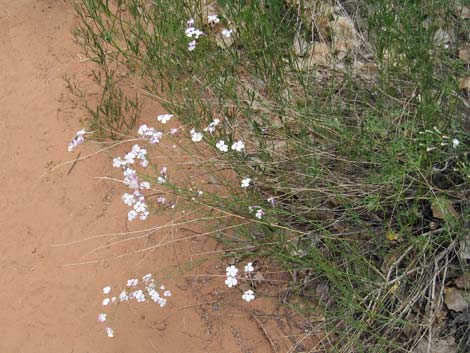 |
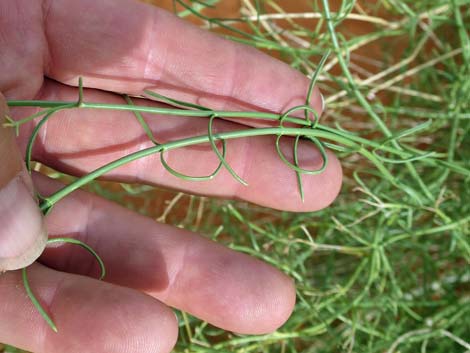 |
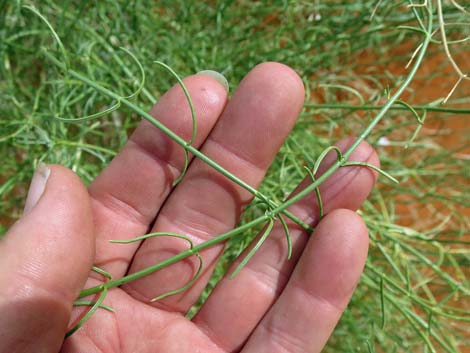 |
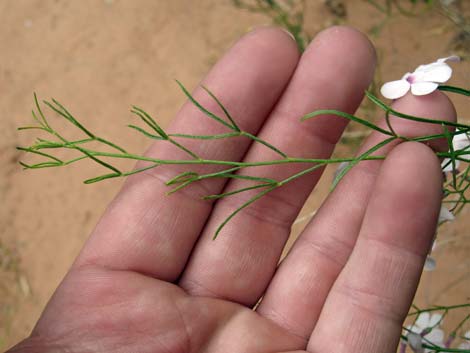 |
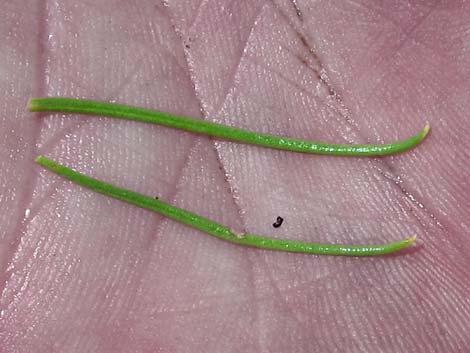 |
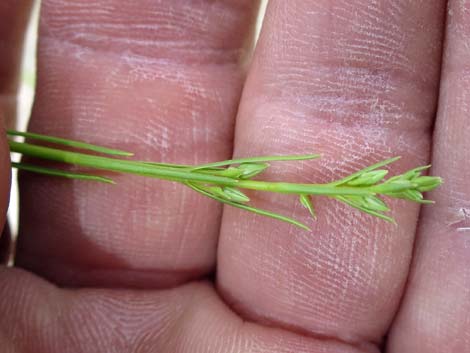 |
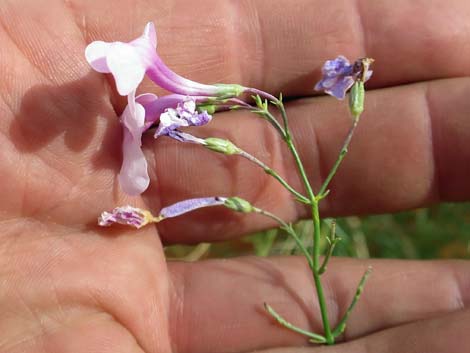 |
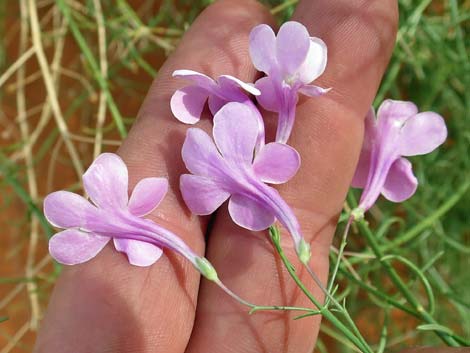 |
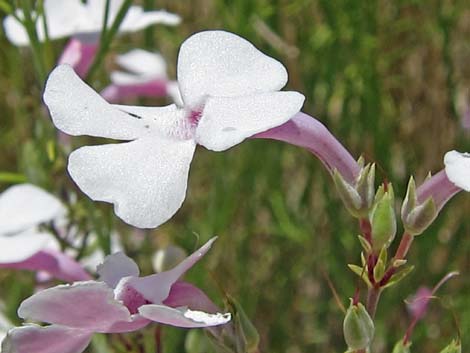 |
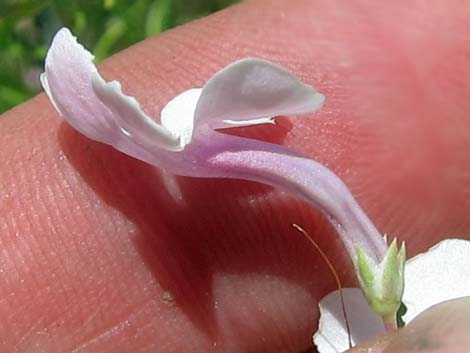 |
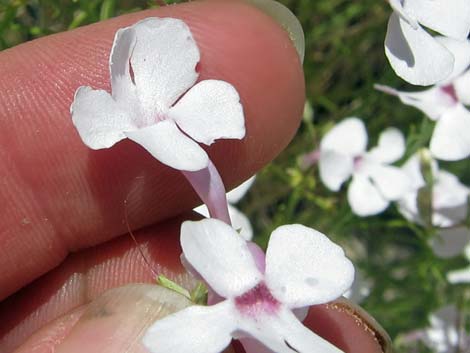 |
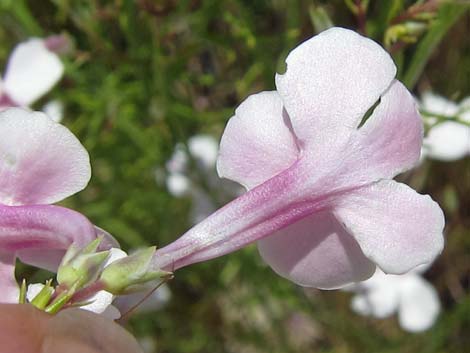 |
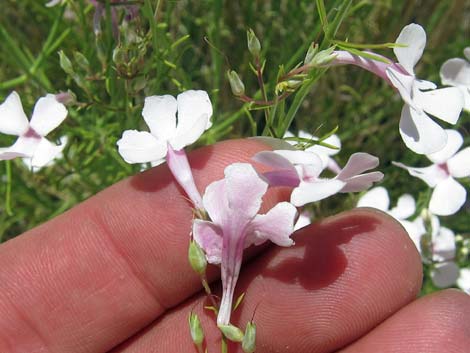 |
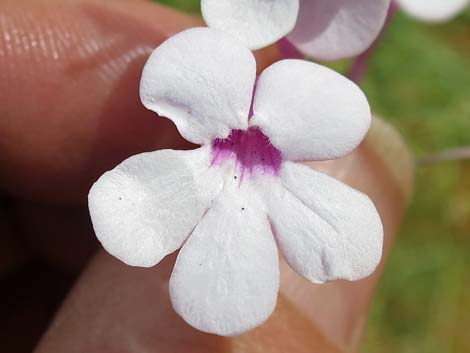 |
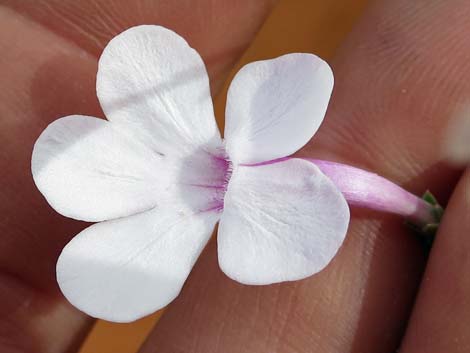 |
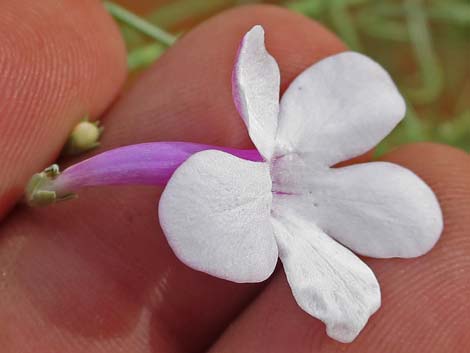 |
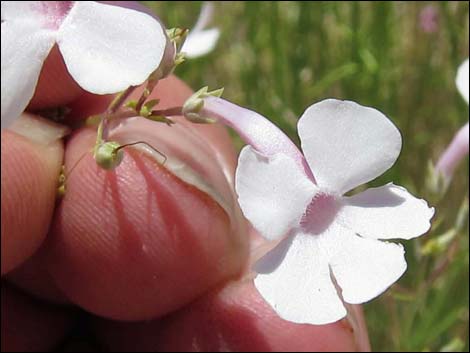 |
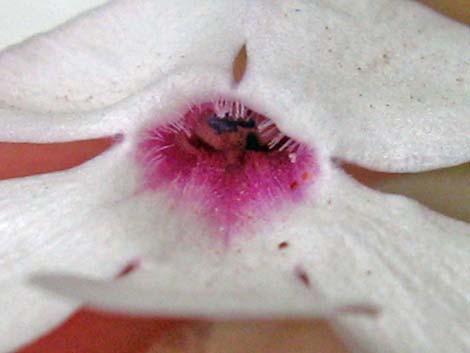 |
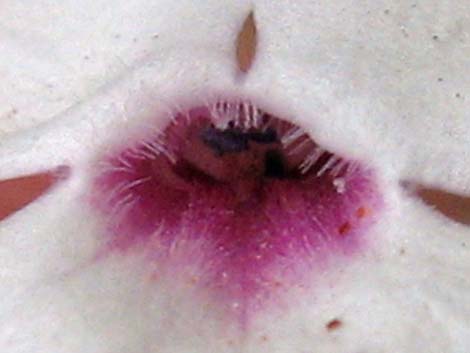 |
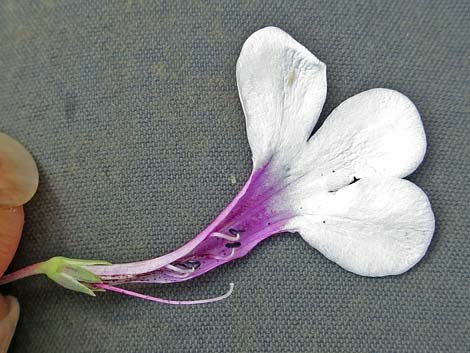 |
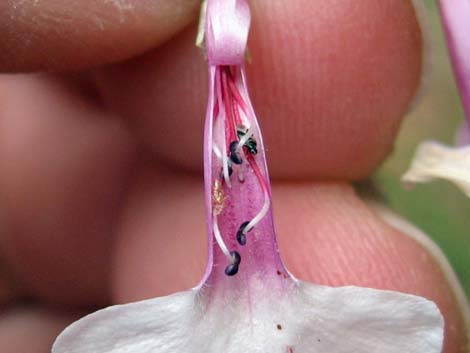 |
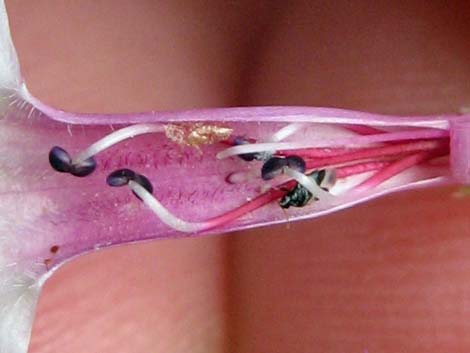 |
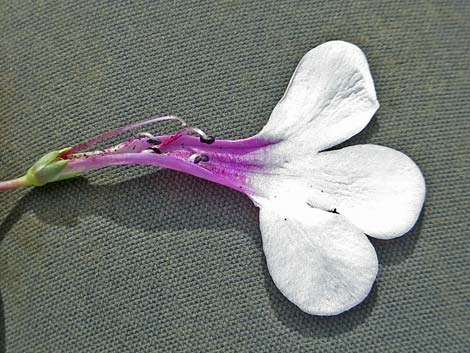 |
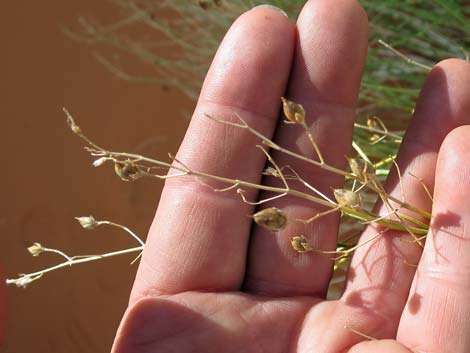 |
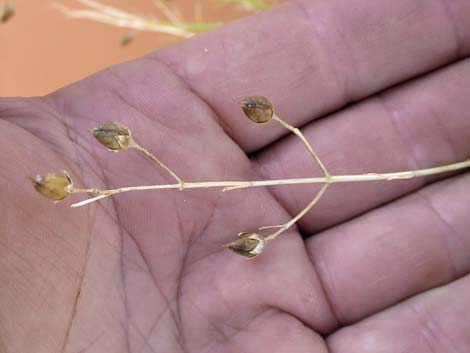 |
Note: All distances, elevations, and other facts are approximate. Names generally follow the USDA database.
![]() ; Last updated 190815
; Last updated 190815
| All Shrubs | Plant Species Index | Glossary | Copyright, Conditions, Disclaimer | Home |